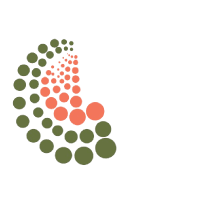What is A Minimum Viable Product (MVP)?
A Minimum Viable Product (MVP) is the basic ready–to–launch version of the product that is known to support minimal yet essential features of the product. The MVPs are built to facilitate faster time to market and attract early adopters to achieve product market fit. Thus, Minimum Viable Product can be briefly explained as the combination of “minimum essentials”. As a result, this new version of the product allows the team to collect the maximum information about the customers with the most minor efforts. To achieve the true potential of MVP it shall be developed in such a way that it becomes usable, reliable, and considerate/ empathetic of the user’s needs.
How To Build A Minimum Viable Product (MVP)?
The Minimum Viable Product (MVP) is the potential product built keeping in mind the all necessary aspects. However, many entrepreneurs and startups focus only on the “M” aspect i.e. making the product with the minimum essentials but fail to focus on the “V” which is an important aspect. Ensuring that the product built is highly viable is an important step. As a result, steps need to be followed to build an ideal MVP for your business.
Step 1: Start with Market Research
Before embarking on the development process of MVP. It is important to understand the target users’ needs. Any business that ignores market research is directly putting its success rate at risk. Thus, it is important to understand the market that the product is expected to target and create the value proposition that they are seeking in the category of the product.
Step 2: Focus on Value Addition
It is of prime importance to understand what value can the new product offer to the users. How can it benefit them? What would motivate people to buy such a product? Seeking answers to these questions is like winning half the battle. Thus, ideating the product and its value proposition is the basic step.
Step 3: Establish A User Flow
The designing process of the product begins at this stage where the businesses shall focus on creating an App from the user’s perspective. From opening the app to executing the transaction every detail and flow of the users shall be clearly defined to the App developers as this is what defines the business’ perspective.product? Seeking answers to these questions is like winning half the battle. Thus, ideating the product and its value proposition is the basic step.
Step 4: Define MVP Features
Prioritizing the features of MVP is the most important task as this is what makes the product offerings beneficial. Arranging these features in a way that aligns with user flow is the next important task as this is what defines the user experience. Even the excellent features become irrelevant if not aligned with user flow.
Step 5: Create and Launch MVP
After deciding on the main features and understanding the market needs, it’s time to create MVP. The MVP can be built using the No–Code development process that neither consumes much time nor cost. Do note MVP is not a lower quality product it is a comparatively easy and suitable option to address the customer needs. flow is the next important task as this is what defines the user experience. Even the excellent features become irrelevant if not aligned with user flow.
Tips To Target The Right MVP
The HBR reports reveal that 85% of the 30,000 newly launched products fail only because of poor market segmentation. Thus, it is important to focus on the following points to ensure that MVP is well–defined.
• Analyze the competition carefully
• Segment the customer base geographically
• Find and create motivation for customers for making a purchase
developed in such a way that it becomes usable, reliable, and considerate/ empathetic of the user’s needs.
How is No – Code Development Tools Suitable For Building MVP?
Build A Minimum Viable Product (MVP)?
The No–Code Tools are considered a great way to build MVP for focusing on what matters most in the startup which usually is marketing and product design. The No–Code platform allows putting together the mobile application without the need to write code. MVP Tools help to build well–rounded, functional, and modern products in a short span of time.
Alongside this, the rich functionalities of the No–Code development tools also bridge the gap between ideas and workable applications. As a result, helps to ensure that the product launch and related activities which may impact the business journey do not get delayed. Thus, No–Code development tools are emerging as the most popular tool for building MVP.
only on the “M” aspect i.e. making the product with the minimum essentials but fail to focus on the “V” which is an important aspect. Ensuring that the product built is highly viable is an important step. As a result, steps need to be followed to build an ideal MVP for your business.





